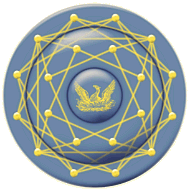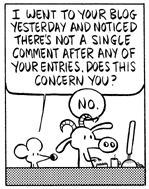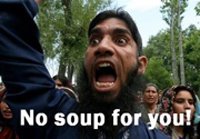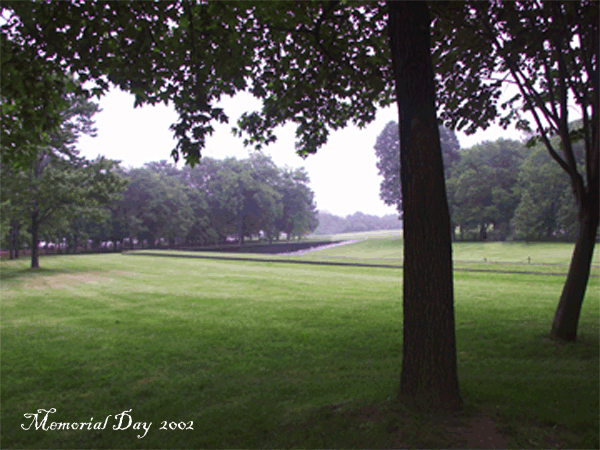Ft Hood’s Terror: The US failed by its own experts
Dr. Phares again gives a detailed and chilling look into the nature of the Islamic invasion of the west. His conclusion is that we have blinded ourselves to the invasion and are suffering further inroads as a result.
FROM POLITICALMAVINS.COM:
Ft Hood’s Terror: The US failed by its own experts
By Walid Phares (bio)
The Pentagon’s review of the act of Terrorism committed at Fort Hood by Major Nidal Hasan deserves national attention not only regarding its important conclusions but also what it missed in terms of analysis. In this piece, I’ll address major points made public in the media and raise issues about the bigger picture regarding the terror threat America is facing today.
Jihadi Penetration: Part of a War
As announced by Secretary of Defense Robert Gates, the report “reveals serious ’shortcomings’ in the military’s ability to stop foreign extremists from trying to use America’s own soldiers against the United States.” The Pentagon’s review of the Fort Hood massacre stated that “serious shortcomings” were found in “the military’s ability to stop foreign extremists from trying to use its own soldiers against the United States.” The first question that comes to mind is to know if the issue is about “shortcomings,” as described by the Pentagon, or is it about “systemic failures” as announced by President Obama in his evaluation of the Christmas Day terror act? For as underlined by the Department of Defense in the case of Major Hasan, these failures were about the military’s ability to “stop foreign terrorists from using American soldiers against the United States.” Such a statement is extremely important as it finally informs the public that US personnel is indeed being infiltrated and recruited by foreign Jihadists, which are described politically by the Administration as “extremists.” Hence, the first logical conclusion from that finding is that Jihadi networks are performing acts of War (and thus of Terrorism) against US defense assets and personnel in the homeland. Thus this warrants the reevaluation of the conflict and re-upgrading it to a state of war, even though it would still need to be determined “with whom.”
Self radicalization:
Secretary Gates said “military supervisors are not properly focused on the threat posed by self-radicalization and need to better understand the behavioral warning signs.” He added that “extremists are changing their tactics in an attempt to hit the United States.”
Concluding that the Fort Hood massacre “reveals shortcomings in the way the department is prepared to defend against threats posed by external influences operating on members of our military community,” he said. “We have not done enough to adapt to the evolving domestic internal security threat to American troops and military facilities.”
The bottom line of the Department of Defense report is, as I relentlessly argued before and since Hasan’s shootings, that the US military and intelligence lack the capability of detecting radicalization, should it be “self” developed or activated from overseas. American analysts are not able to “detect” radicalization from where it is generated. In my last three books and dozens of briefings and testimonies to legislative and executive forums, I underlined the crucial importance of identifying the ideology behind radicalization. For the latter is produced by a set of ideas assembled in a doctrinal package. Unfortunately the Bush and Obama Administrations were both poorly advised by their experts. They were told, wrongly, that if they try to identify a “doctrine” they will be meddling with a religion. Academic and cultural advisors of the various US agencies and offices (the majority of them at least) failed their government by triggering a fear of theological entanglement. To the surprise of our Arab and Muslim allies in the region, who know how to detect the Jihadist narrative, Washington disarmed its own analysts when bureaucrats of the last two years banned the reference to the very ideological indicators that could enable our analysts in detecting the radicalization threat. And it is not about “extreme religious views” inasmuch as it is about an ideology. If Arabs and Muslims can identify it in the Middle East, why can’t Americans do this also? Simply because Jihadi propaganda already penetrated our advising body and fooled many of our decision makers into dropping the ideological parameters. Hence stunningly Major Hasan, who amazingly displayed all the narrative of Jihadism, was not spotted as a Jihadist. The report tried to blame his colleagues and other superiors for failing to find him “suspicious enough” and thus for causing a shortcoming. I disagree: what allowed Hasan to move undetected was a bureaucratic memo issued under both Administrations and made into policy last summer, ordering the members of the public service to not look at ideology or refer to words that can detect it. We did it to ourselves.
The strategic threat ahead
The report raises “serious questions” about whether the military is prepared for similar attacks, particularly “multiple, simultaneous incidents.” In my book, Future Jihad: Terrorist Strategies against America published half a decade ago, I sternly warned about the strategic determination of Jihadists, al Qaeda and beyond, to target the US homeland, not just in terms of terrorizing the public, but in the framework of a chain of strikes widening gradually until it would evolve to coordinated, simultaneous attacks. In 2006-2007, I served on the then Task Force on Future Terrorism of the Department of Homeland Security and developed an analysis clearly showing the path to come. My briefings to several entities and agencies in the Defense sector clearly argued that implanting, growing, and triggering homegrown Jihadists to strike at US national security is at the heart of the enemy’s strategy. I even projected the existence of a “war room” that directs these operations; Imam al Awlaki’s example of multiple operatives’ coordination is only a small fragment of what it would be like. In facing this mushrooming threat, not only do we not have a detection capacity to counter it, but we have been induced in error to adopt the opposite policies suitable to our national defense. The misleading advice that the US Government relied on is deeply responsible for the failure to counter, stop and reverse radicalization. The report, although a step in the right direction, has troubling short
a. It claims “fixation on religion” is a missing indicator. Meaning if Muslims insist on praying or Catholics refrain from eating meat on Fridays during Lent this could be a lead to radicalization. Obviously it is a dead end; for the indicator is the substance of the fixation, not the mere fact of religiosity. One statement of commitment to Jihad is by far more important than fasting during the whole month of Ramadan. It is not theology it is ideology, even though many writers in town insist on merging both based on their readings of text. I offer our government an easier way to detect the threat, without venturing in inextricable religious debates or unnecessarily apologizing for one or other particular faith.
b. The report describes Hasan as “an odd duck and a loner who was passed along from office to office and job to job despite professional failings that included missed or failed exams and physical fitness requirements.” Nice shot, but it leads nowhere. For the other potential Hasans amongst us aren’t all necessarily odd, failed students and physically unfit. The next Jihadists could be sharp, are professionals and extremely social. It all depends on what the “War Room” is going to surprise us with. Medical doctors in Britain, rich young men from Nigeria or converted farmers from North Carolina aren’t all in one profile basket. So let’s stop looking for framing “profiles” and start detecting ideology.
c. The report calls on the Defense Department “to fully staff those teams of investigators, analysts, linguists and others so the Pentagon can quickly see information collected across government agencies about potential links between troops and terrorist or extremist groups.” This is a long awaited initiative short of creating further catastrophes by staffing our bureaucracies with more cultural advisors, who would mislead our leaders further and worsen the already fledgling counter ideology sectors already in place. I am making the bold statement that our problem is precisely that the expertise we sought over the past eight years is the reason for our inability to detect radicalization. Hence I would recommend an additional inquiry into our own specialization body before we re-contract it to lead the war of ideas.
The beef is there. Everything else is dressing.
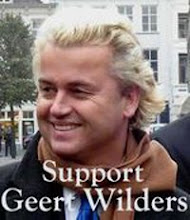

.jpg)








